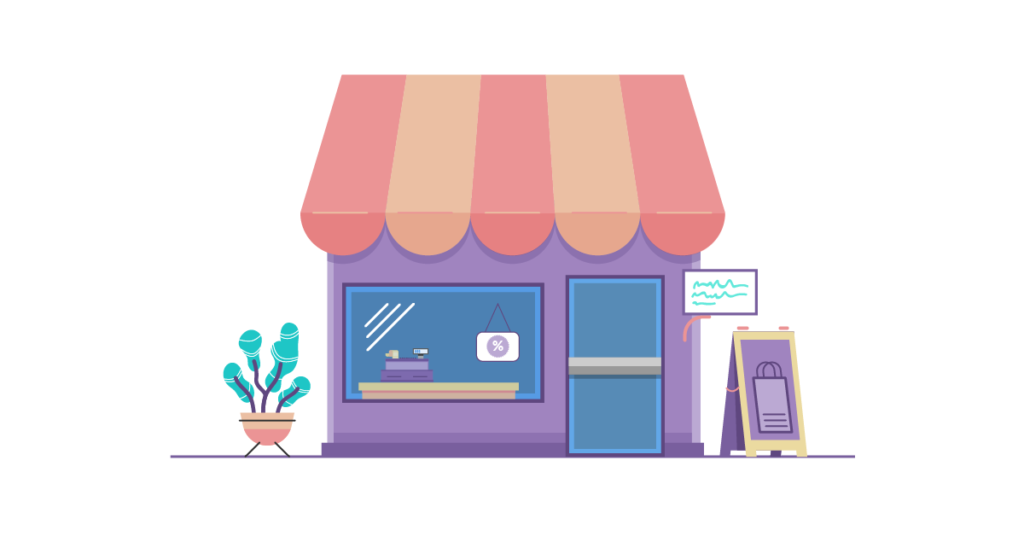More and more people prefer shopping online rather than in stores in their towns, but that definitely doesn’t mean online shop owners can’t learn a thing or two from their brick-and-mortar companions.
Here are just seven things that you can take from malls, shopping centers, and local mom-and-pop shops to use in your online storefront from immense success.
1. Control Your Product Range
It can be tempting to offer everything in as many colors and sizes and other options as possible, but it is rarely cost-effective to do so. One of the biggest lessons you can learn from a brick-and-mortar store is to focus your efforts on products that sell.
The better you’re able to manage and move your inventory, the more you can reduce costs associated with storage, quality, and inventory management.
We think this is a chief message to start with because it’s something that cuts both ways. When online brands move into their first brick-and-mortar locations, they often struggle with newfound space limitations. It can be a big pain, but it also forces them to focus on the products that make the most sense for their business.
Your online store can perform the same type of control in two ways:
- Limit the total number of goods you carry, making it easier for customers to learn your catalog and you funnel them to more lucrative options.
- When you use drop shipping or another method where you’re not paying for storage on a per-item basis, control the products that you display online. Focus your recommendations and landing pages on lucrative products to drive more traffic to popular items and (hopefully) generate more sales.
Sometimes people can be paralyzed by choice. If your options are doing that, then a reduction may help boost sales while also cut back on your inventory expenses.
2. Showcase Products in a Variety of Ways
It’s hard to compete with one core advantage of a brick-and-mortar store: customers can physically interact with goods. That means holding them in their hands, trying things on, and testing those products in as close to real-world applications as possible.
Online can’t compete directly, but you can work to mimic some of these uses. The key is to provide as many different ways to show your products in action as possible. Here are a few ways you can go about highlighting your products in a way that’s useful to your customers:
- Photos: Always start with great photography that’s specifically designed to showcase your product. Get photos from multiple angles that capture the true look and feel of what you sell. You don’t want to end up on an “online haul fail” video when your sweater advertised for people only fits on cats.
- Videos: Smartphones and PCs are immensely powerful, and most internet connections are fast, so your customers will have the capability to watch video no matter how they land on your site. Use this to your advantage to show products in use. You can go many different routes with video, but the best is to treat online videos like short commercials or infomercials. Those are tried and true techniques for demonstrating a product.
- People: Multiple kinds of people are going to use your product, so make sure your photos and video reflect this. Clothing should be shown on models of varying sizes. If your product can be used by children and adults, have both present. And, if something limits your product, show this too. If the height of a person impacts which model they should choose, a video can explain this quickly and easily.
- Real-world use: Put those photos and videos in real-world scenarios when possible. While everyone knows you’re controlling as much of the scene as possible, it’ll still connect with your audience and make it easier for the viewer to envision themselves using your product.
- Content from customers: Last but certainly not least are action shots from your customers. You’ve probably seen big brands turn to user-generated content for marketing, but it’s extremely compelling and helps your audience get a real sense of your product. Popular Amazon reviewers tend to include photos and video of their own, so your customers might be willing to do the same for you.
Nothing can quite replace being able to interact with a product physically, but these considerations definitely can help. The good news is that your customers are used to this now. Pew notes that nearly 80% of all Americans shop online and 26% of U.S. adults are online “almost constantly.”
3. Keep Specials and Deals Clear
In an online space, there’s rarely someone to ask a question to — though this is changing with the rise in chatbots. So, customer confusion is a big problem. In busy retail stores, the same is often true because there are too few associates to help everyone individually.
Both physical and digital stores lose out on customers due to confusion, especially around sales and discounts. Deals restricted to a selection of items that don’t have a clear connection or specials limited to a small subset of goods can cause confusion too.
Brick-and-mortar retailers try to keep things clear with signs that tell the sale dates and savings as well as an attempt to mark what is on sale, sometimes with a new price tag and other times with a certain colored sticker.
Your online store needs to do this as well with all sales and specials. On every page, have something that explains your current deal. On a product page where the deal applies, state this specifically and show it in place of the normal cost.
This is actually a spot where you have an advantage over traditional stores: you are limiting to saying 30% off, you can also show the reduced price. Customers don’t have to do the math in their head and see if it’s a good deal; you have an opportunity to demonstrate that it is a good deal if you keep the sale information clear.
4. Prioritize Support and Service
Physical retail brands grow their number of stores or distribution partners when they want to move into a new area. They create relationships that can ensure customer access to new products as well as a way to return goods if there is a problem.
Online brands must do the same thing to survive. For you, this likely means ecommerce fulfillment partners that manage your logistics from end-to-end. Your existing warehouse or your fulfillment company needs to be able to integrate with your website to provide clear delivery dates during order checkout and then have the workforce to meet those promises affordably.
Third-party logistics companies (3PLs) and other warehouse service providers often have a little bit of an advantage over the standard ecommerce company because of the volume of shipments a 3PL makes each day. They’re sending out goods for multiple customers, generating significant business for partners like UPS and FedEx. That means these carriers often provide discounts, reducing the cost to ship goods to any location.
Thankfully, many pass that savings on to the ecommerce brands, who can then offer reduced-cost or even free shipping options to their customers.
The returns process is one of the hardest pieces of this puzzle, especially if you do it all yourself. You’ll need a system that can generate return receipts. Then, you need to give the customer the label to ship things back to you. You’ll need to have a process in your warehouse to ensure goods are received and then check them for damage. And, finally, you’ll need to credit your customer with a refund or a replacement.
When you struggle with meeting shipping deadlines or you have a returns process that is slow and painful for the customer, they may look elsewhere for their next purchase. This is one of the primary areas where outsourcing your warehousing can be a significant benefit.
5. Keep Collecting Data
Brick-and-mortar retail stores can collect customer information in a variety of ways every day of the week. Customers come in and make requests, give comments, and have conversations about the business, industry trends, and much more. Smart retail stores have employees create reports on these interactions.
Your ecommerce company can do the same thing by monitoring activity on your website, with a focus on the actions everyone takes on a page as well as the path specific customers take to make a purchase.
Learning from brick-and-mortar means taking this a step further and asking customers for other feedback. After they order clothes, consider a question on the “Thank You” page that asks if they would like to see new colors or styles.
Or, you can adopt chatbots and live customer support to help answer questions customers have. After the customer asks a question, you have an opportunity to ask them what they are looking for, if there is anything they didn’t see, or what could make their experience better.
You can dangle coupons or discounts as well if you want to ask multiple specific questions.
You can’t know what you don’t measure, and you can’t learn what you don’t ask.
6. Go Local When Possible
You obviously don’t have a local retail location to drive customers to, but you do exist within a community. Work with that community in the same way that brick-and-mortar stores do in an effort to generate interest and loyalty.
Consider sponsoring local youth sports, having your team participate in 5Ks, volunteer, take out ads in the local paper or local magazines, and spend some of your digital advertising budget targeting local search. Local SEO can boost your overall SEO efforts while furthering your community engagement.
The goodwill that local stores can create by being a part of the local community is something that’s available to ecommerce brands, but unfortunately many pass up the opportunity and miss out on its benefits.
7. Mimic Your Favorite Store
Most of us have a favorite store, whether it’s a little café, a nice bar or restaurant, a dress shop, electronics store, home improvement store, and the list goes on and on. Take a minute to think of the store you most enjoy entering.
Why do you like it so much?
Break down that answer into as many granular points as possible. It could be that they know your name and your order, that you’re met with a friendly greeting every time you walk in, they always have your size, you only have to talk with people when you want to, or a host of other reasons.
Take this list of things you like and check to see if your customers like them too. It should give you some significant A/B testing options or can point you toward adopting something that you lack, like a rewards program.
Even if these don’t work for your customers, the process will have you thinking about ways to improve your business. It’s the perfect beginning to the consistent brainstorming that any successful ecommerce endeavor requires.



